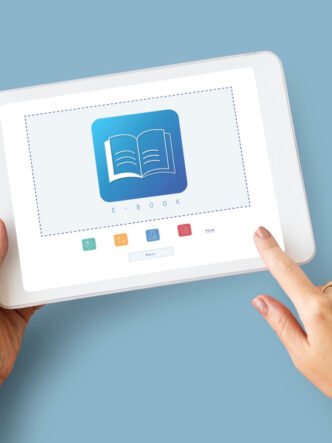If you’re an online course creator or any other type of educator, you will want to optimize the educational experience for learners. Using analytics gives you the data insights you need and without them you are working in the dark. When you collect and analyze data, such as engagement metrics and quiz results, your actions to improve online courses are evidence-based. Data-driven learning design uses analytics to enhance educational outcomes. Extracting actionable insights helps you to create more personalized and effective learning experiences.
Most e-learning content today consists of videos, as they provide convenient, accessible and flexible learning. You need to use e-learning content analytics and learner behavior data to refine and improve your e-learning videos. Read on to find out what metrics matter most and how to interpret them. If you can learn how to turn your data insights into action, you can optimize training content.

Key video analytics metrics to track
You must know what metrics to measure if you want to use them to improve e-learning content. Key metrics relate to the learners engagement levels and interaction rates.
Watch time, drop-off points, completion rate
Watch time is the total amount of time learners will spend watching a video. It’s a metric that can help you to determine whether video content is relevant and immersive. High watch time indicates strong viewer engagement with e-learning video content. Low watch time may indicate a need for a more concise video or improvements in the content.
Drop-off rate is a key metric to consider when improving e-learning. It measures the percentage of viewers that stop watching a video before the ending. This metric can show you the specific points in the video when learners lose interest. Looking at these points can help you to identify issues.
A certain percentage of learners will watch your e-learning videos from beginning to end. This is a sign that they find them engaging. When they don’t watch to the end, it could be because the content is hard to understand.
Interaction rates
Interaction rates indicate active involvement of viewers with a video. These interactions come in many different forms. They can be commenting on or sharing a video. An interaction may be completing a quiz, clicking on a hotspot, or filling in a survey.
If interaction rates are high, it shows that learners are engaging with the content. They participate actively rather than just consuming the information passively. Getting direct feedback on viewer interactions can help to guide your future content creation.
Quiz scores show how well learners grasp the concepts you teach in a course. Low scores will highlight areas where you may need to explain material more clearly or offer additional resources. If learners get high scores, they may need access to further videos or additional resources. A way to interact with learners and make learning more personal is with video messaging. You can offer explanations, get feedback, and more.

How to use analytics to refine course design
E-learning content analytics enable you to refine your course design. Using a video hosting platform like Cincopa gives you access to video analytics dashboards and heatmaps. You can track the performance of individual videos and viewer interactions with videos. The heatmaps visually represent the data in color coding. Warm colors indicate high engagement and cool colors show areas of low engagement.
The Cincopa platform also integrates with various Learning Management Systems (LMSs). This streamlines your e-learning workflows and helps you track key metrics such as quiz scores to measure learner progress.
Identify and improve weak points in content
When you have access to analytics, you can check whether specific videos have weak points in their content.
If module engagement is low, you could try adding more interactive elements to them. Reorganizing course content could help to improve the flow and increase engagement. Using clearer language or providing more examples could also make a difference.
If learners tend to drop off a module at a certain point, you may be able to pinpoint issues such as poor pacing or irrelevant information.
Do certain modules have significantly lower completion rates? This could indicate that these modules are too long. You could consider breaking these modules down further into smaller, more manageable units. Bite-sized information is easier to absorb and retain.
You will need to track changes over several weeks to see if there’s an improvement. Making small incremental changes as you receive new data insights can result in a great improvement over time.
Tailor content to learner needs
Learner behavior tracking can help you to personalize your video content. Personalizing learning by taking specific needs and preferences into account increases motivation and makes learning more effective.
Predictive analytics uses historical data, past performance, and learner demographics to help you predict learner needs. You can anticipate areas where learners may struggle. This helps you to offer them targeted resources before they fall behind. You may be able to recommend a specific learning path for a learner based on the analysis of data. Some practice exercises or targeted coaching could be beneficial.
AI-based learning can adjust in real-time based on learner performance. It can offer challenges that suit specific learning styles and give suggestions for improvements based on individual learning paths.
Improve engagement with A/B testing and user feedback
A/B testing involves creating two versions of a video that differ in one respect. They may have different titles or thumbnails. One may be longer than the other or have a more playful script. Presenting these videos to learners helps you to measure their performance.
A/B testing allows you to identify which elements resonate most with viewers. By systematically adjusting different elements, you can discover what drives your audience to take action. You can experiment with where to place calls to action to receive the most engagement.
You could also compare the performance of different video formats and lengths. Testing these could help you to find which ones were able to capture and retain attention.
The information you gather from learners helps you to understand their perspectives. You can identify where they are struggling and address this promptly so they don’t fall behind. Surveys may help you to identify which types of quiz questions learners prefer and other useful information.
On the Cincopa platform, you have many ways to receive feedback. When live streaming, you can have discussions and ask learners questions. Quizzes, surveys, and polls all offer feedback on learner progress and allow you to understand their perspectives.
Create a feedback loop with analytics and learner surveys
- A feedback loop allows you to keep making adjustments to your e-learning courses.
- Creating a feedback loop involves various steps. You must collect data and analyze it. You implement your insights and analyze them. Then you keep repeating the process. This ensures improvement keeps taking place over time.
- By identifying the positive aspects of your e-learning videos, you can build on them in a targeted manner. For example, you can offer rewards for good performance or access to more challenging materials.
- Continuous feedback in the form of learner surveys can also help you to identify gaps in learning. This means you can offer supplementary material and support.
- Feedback can help with personalizing learning to meet learner needs. A personalized approach helps to increase motivation.
- Feedback allows learners to reflect on their actions. This can improve their existing skills and help them to develop new skills.
A feedback loop ensures continuous growth and development of individuals and organizations. Making small, incremental improvements can add up over the long term to significantly increase the effectiveness of e-learning.
Conclusion: Data turns good content into great learning
By using e-learning content analytics, educators can create more personalized, engaging, and effective e-learning experiences. This ultimately improves learner outcomes and success. It is also beneficial for your success as an educator. If you go to the Cincopa home page, you can sign up for a free trial and explore its advanced analytics and how they can help with continuous improvement of your e-learning content.









